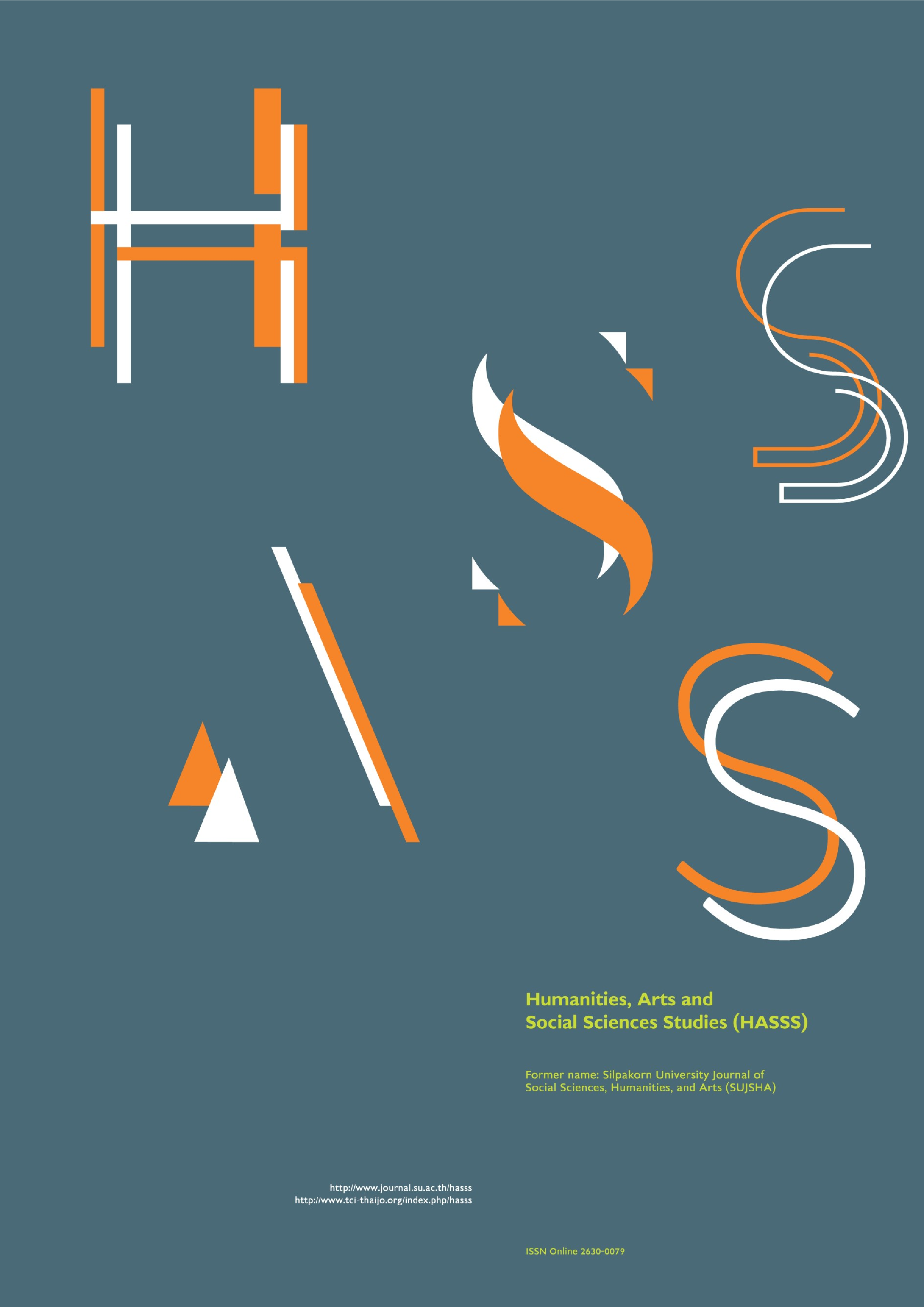Hijab and sexual harassment among urban Muslim women: Role of continuity and consistency of practice
Main Article Content
Abstract
The wearers of hijab often regard their dress as a mark of identity and a source of modesty. The present paper targets to finding relationship between practicing hijab and sexual harassment experiences among urban Pakistani women. It also explores the moderating effect of continuity and consistency of this practice. Three hundred and sixty five women from seven urban areas filled in the modified versions of Sexual Harassment Experience Questionnaire (SHEQ) and Social Desirability Scale (SDS-17). The participants were five dress groups: niqab-wearing, head scarfing, head covering, dupatta-carrying, and the modern-dressed. The first two groups were collectively called the hijab-wearing. The last three were inducted for comparison purpose. Results indicated that the niqab-wearing women were most protected from sexual harassment. For the niqab-wearing women, the low-consistency group with high continuity of their dress practice showed a decline in harassment, while for the headscarf women the high-consistency group displayed similar pattern. The paper emphasizes that niqab (face veil) has a healthy bearing on the social life of its wearers. It has been proposed that covering the head with a dupatta or chador may be a suitable alternative for the headscarfing group.
Downloads
Article Details

This work is licensed under a Creative Commons Attribution-NonCommercial-NoDerivatives 4.0 International License.
All rights reserved. Apart from citations for the purposes of research, private study, or criticism and review,no part of this publication may be reproduced, stored or transmitted in any other form without prior written permission by the publisher.
References
Ahmed, S. (2017). Mayim Bialik, If You Think Modest Clothing Protects You from Sexual Harassment, You Need to Listen to These Muslim Women. The Independent. [Online URL: https://www.independent.co.uk/voices/modest-clothing-mayim-bialik-harvey-weinstein-sexual-harassment-muslim-women-a8004501.html] accessed on March 20, 2021.
Droogsma, R. A. (2007). Redefining hijab: American Muslim women’s standpoints on veiling. Journal of Applied Communication Research 35(3): 294-319. [Online URL: https://www.tandfonline.com/doi/full/10.1080/00909880701434299?scroll=top&needAccess=true&role=tab] accessed on December 6, 2022.
El Guindi, F. (1999) Veil: Modesty, Privacy and Resistance. New York: Berg.
Fayyaz, W. (2015). Conditions, Context, and Outcomes of Practicing Veil (Hijab) among Pakistani Women. Doctoral dissertation. Quaid-i-Azam University, Pakistan.
Fayyaz, W. and Kamal, A. (2017). Psychosocial factors related to practicing hijab among Muslim women in Pakistan. Journal of Behavioural Sciences 27(2): 80–101.
Field, A. (2009). Discovering Statistics Using SPSS. 3rd ed. London: Sage.
Franks, M. (2000). Crossing the borders of whiteness? White Muslim women who wear the hijab in Britain today. Ethnic and Racial Studies 23(5): 917–929.
Gelfand, M. J., Fitzgerald, L. F. and Drasgow, F. (1995). The structure of sexual harassment: A confirmatory analysis across cultures and settings. Journal of Vocational Behavior 47(2): 164–177.
Gökarîksel, B. and Secor, A. J. (2009). New transnational geographies of Islamism, capitalism and subjectivity: The veiling-fashion industry in Turkey. Area 41(1): 6–18.
Gökarîksel, B. and Secor, A. J. (2012). "Even I was tempted": The moral ambivalence and ethical practice of veiling-fashion in Turkey. Annals of the Association of American Geographers 102(4): 847–862. [Online URL: http://www.jstor.org/stable/23275511] accessed on September 23, 2013.
Golnaraghi, G. and Mills, A. J. (2013). Unveiling the myth of the Muslim woman: A postcolonial critique. Equality, Diversity and Inclusion 32(2): 157–172.
Hawkins, S. (2008). Hijab: Feminine allure and charm to men in Tunis. Ethnology 47(1): 1–21. [Online URL: http://www.jstor.org/stable/25651543] accessed on June 15, 2013.
Iqbal, S. and Kamal, A. (2001). Sexual harassment experiences of the women working in an airline. Journal of the Indian Academy of Applied Psychology 27(1–2): 109–120.
Jackson, K. E. and Monk-Turner, E. (2015). The meaning of hijab: Voices of Muslim women in Egypt and Yemen. Journal of International Women's Studies 16(2): 30–48.
Javed, N. (2014). Meanings, patterns and the social function of hijab amongst female university students. European Academic Research 1(12): 5499–5510.
Jørgensen, S. K. (2008). To Authenticate Opinion and (Re-)draw the boundaries of the Public Sphere. Paper presented at PhD Conference Rhetorical Citizenship. The Role of Rhetoric and Discourse Studies in Public Sphere Issues. Copenhagen, Denmark. May 13–17. [Online URL: https://hal-hprints.archives-ouvertes.fr/hprints-00286401/document] accessed on December 6, 2022.
Kamal, A. and Fayyaz, W. (2016). Conditions of wearing hijab and other forms of dress: A comparative study. Pakistan Journal of Women’s Studies: Alam-e-Niswan 23(2): 91–102.
Khaddarposh, M. (2004). Masud Khaddarposh: Sawanhe Hayat. Lahore: Sang-e-Meel. [in Urdu]
Khan, A. (1999). Mobility of women and access to health and family planning services in Pakistan. Reproductive Health Matters 7(14): 39–48. [Online URL: http://www.jstor.org/stable/3775060] accessed on April 5, 2013.
Kopp, H. (2005). Dress and diversity: Muslim women and Islamic dress in an immigrant/minority context. The Muslim World 92(1–2): 59–78.
Kousar, S. (2011). Gender Perspective on the Institution of Purdah in the Campus of QAU (Quaid-e-Azam University). Master’s Thesis. Quaid-e-Azam University, Pakistan.
Mumtaz, K. (1987). Women of Pakistan: Two Steps Forward, One Step Back? Lahore: Vanguard Books.
Murshid, T. M. (2005). Islam, sharia law, and the role of women in Muslim societies: Myths and perceptions. Pakistan Journal of Women’s Studies: Alam-e-Niswan 12: 1–21.
Papanek, H. (1971). Purdah in Pakistan: Seclusion and modern occupations for women. Journal of Marriage and Family 33(3): 517–530.
Siraj, A. (2011). Meanings of modesty and the hijab amongst Muslim women in Glasgow, Scotland. Gender, Place & Culture 18(6): 716–731.
Stöber, J. (2001). The Social Desirability Scale-17 (SDS-17): Convergent validity, discriminant validity, and relationship with age. European Journal of Psychological Assessment 17(3): 222–232.
Woldesemait, M. (2012). The rhetoric of the modern hijab. Independent Study Project (ISP) Collection. 1273. [Online URL: http://digitalcollections.sit.edu/isp_collection/1273] accessed on January 13, 2014.


